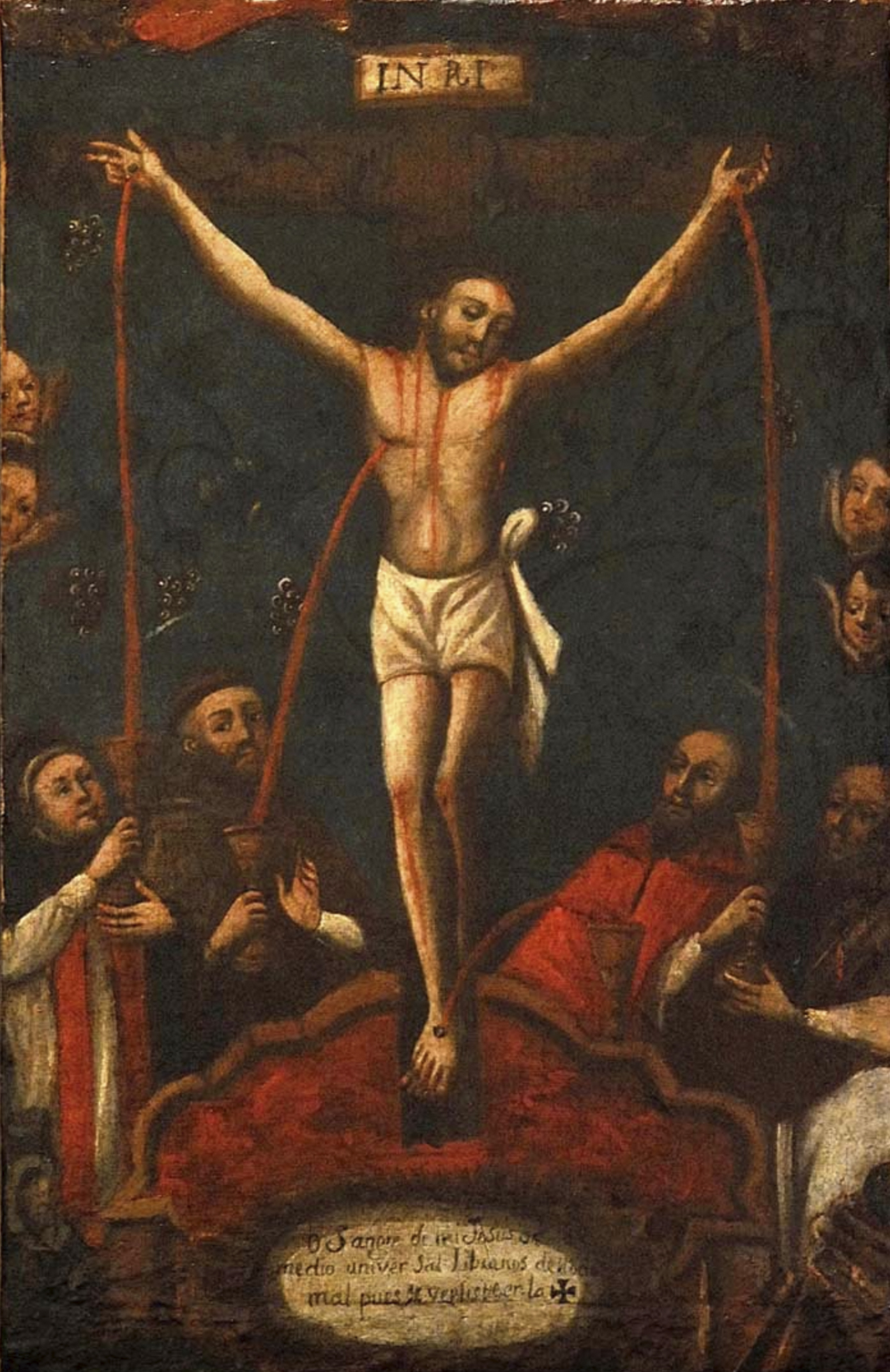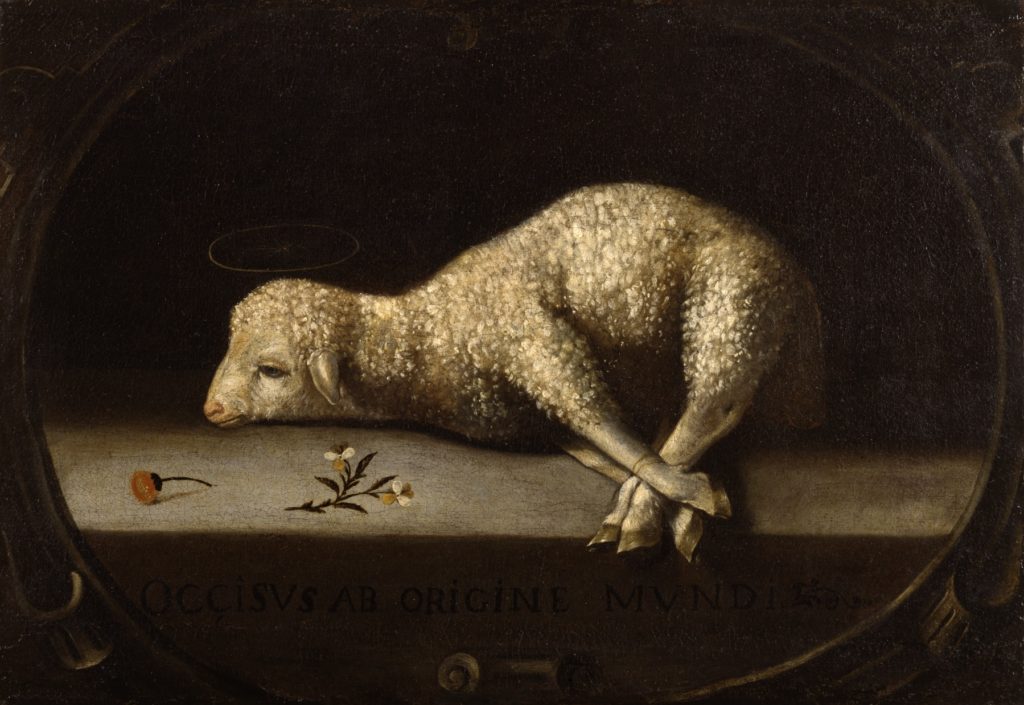The U.S. bishops are encouraging Catholics to deepen their love for the Eucharist as part of the ongoing National Eucharistic Revival initiative. In light of that effort, the following is the fourth in a series from Angelus contributing editor Mike Aquilina on the meaning and makeup of the Eucharistic Prayers.
Today when we speak of “sacrifice,” we mean the word as a weak metaphor. In baseball, a batter hits a “sacrifice fly,” accepting an out so that a teammate can score. Parents speak of sacrificing time or sleep in order to care for their children.
The biblical sense was more vivid. And it was definitely bloodier.
In the first century, sacrifice — animal sacrifice — was the most common act of worship in all the major religions of the Roman world. Greeks and Romans did it. Jews did it. The barbarians beyond the borders did it.
In its Latin root, “sacrifice” means “make holy,” and this was typically done through the ritual slaughter of animals. Temples were built for this purpose. They were not places of prayer, but rather places of worship, and worship was inconceivable apart from sacrifice.
The Romans offered sacrifice to a wide variety of idols and spirits. The Greeks even made oblations “to an unknown god” (Acts 17:23). But Jews sacrificed only to God and only at the Temple in Jerusalem; and only authorized priests could perform the rites.
In the Jerusalem Temple, priests daily offered sacrifice on behalf of individuals and the entire nation. People were required to make offerings at certain times in life, such as the birth of a child (see Luke 2:22–24). This kept priests occupied at the altar throughout ordinary days of the year. On feast days, the activity increased to industrial scale, with many priests working in shifts. On Passover, they offered as many as a quarter of a million lambs, and the river in Jerusalem ran red with blood.
Some animals were given entirely to God as a “holocaust.” Others were shared between the altar and the priests. Still others were shared with the people who offered the victim.
In all cases, the action was seen as establishing or restoring communion with God.

The act of offering was rich in meaning. It was, at the most basic level, a recognition that all things belong to God. In sacrifice, people gave back to God what was already his, and they thanked him.
But it was also an act of penance. Jews recognized that they had sinned against God who had given them life, and for their sins they deserved to die. In his mercy, God allowed them to give animals as symbolic substitutes. A man did this at the beginning of the rite by placing his hand on the victim's head, thus identifying himself with the victim, offering himself to God. The animal would then die in place of the guilty party.
Biblical religion has been sacrificial from the beginning. In Genesis, Cain and Abel made their offerings to God, who blessed the victims from Abel’s flock (see 4:3–4). Abraham offered many animal victims, and in the culminating act of the time of the patriarchs, God called him to make an offering of his firstborn son, Isaac (Genesis 22:2).
After the Exodus from Egypt, God established a complex sacrificial system for Israel to follow, but made clear that he was not demanding a rote or mechanical act. The sacrifices were to be outward signs of inward conversion. Otherwise, the offering had no value whatsoever. “Though the sweet fragrance of every sacrifice is a trifle, and the fat of all burnt offerings but little in your sight, one who fears the Lord is forever great” (Judith 16:16).
Through the Prophet Isaiah, God uses stronger language: “What do I care for the multitude of your sacrifices? says the LORD. I have had enough of whole-burnt rams and fat of fatlings. In the blood of calves, lambs, and goats I find no pleasure” (Isaiah 1:11).
God does not need sacrifice, he is making clear. It is his people who need to make the offering. What God wants is the repentance, gratitude, and worship that are implicit in the act of sacrifice. “Wash yourselves clean!” he goes on to say. “Put away your misdeeds from before my eyes; cease doing evil; learn to do good. Make justice your aim: redress the wronged, hear the orphan’s plea, defend the widow” (Isaiah 1:16–17).
The Temple offerings would cease when (as Jesus predicted) the Temple was destroyed in A.D. 70. At that time the priests of the Old Covenant were exiled and dispersed. There could be no further sacrifice.
But Jesus had by then established his body as the Temple (John 2:19–21), and the Church as his body (Ephesians 1:22–23).
Israel’s sacrifices had been limited in their effectiveness, St. Paul wrote, but Jesus’ body accomplished what “sacrifice and offering” could not (see Hebrews 10:5). It cleansed people and saved them: “we have been consecrated through the offering of the body of Jesus Christ once for all” (Hebrews 10:10).
Jesus offers his body in heaven as a perpetual sacrifice to the Father (Hebrews 9:11–28). Yet the Church on earth participates in that sacrifice even now. The Letter to the Hebrews speaks of the assembly as a sacrificial rite enjoyed in ordinary Christian worship (see Hebrews 12:18–24) — at the Church’s altar (Hebrews 13:10) in the Eucharist.
At the Last Supper Jesus used sacrificial language when he spoke of the meal as his memorial (see Luke 22:19). And he had acted in a priestly way by offering body and blood for the sake of others (see Luke 22:19–20).
The apostle Paul, in his First Letter to the Corinthians, noted that Jesus’ Eucharist did what all sacrifices do. They bring about communion. He said that “those who eat the sacrifices [are] participants in the altar” (1 Corinthians 10:18). That was true for Israel — and even for the Gentiles, who worshiped idols! In offering sacrifice to false gods, they became “participants with demons” (1 Corinthians 10:20).
Jesus’ offering of himself was begun at the Last Supper and consummated on the cross, but it was complete only with his ascension to heaven. It is a once-for-all sacrifice, and all Christians, through all time, are called to the Church’s altar to participate in it. “The cup of blessing that we bless, is it not a participation in the blood of Christ? The bread that we break, is it not a participation in the body of Christ?” (1 Corinthians 10:16).
This is no metaphor. It is not a mere symbol. It is the only true and efficacious sacrifice. It is presented in an unbloody way, but it is the true blood of Jesus Christ — more real than all those millions of victims offered on the altars of the world through all the millennia before.

